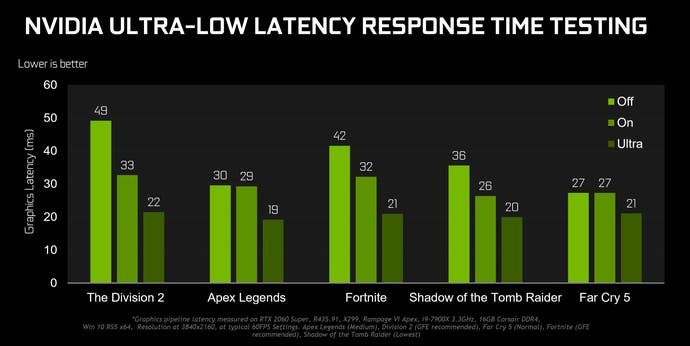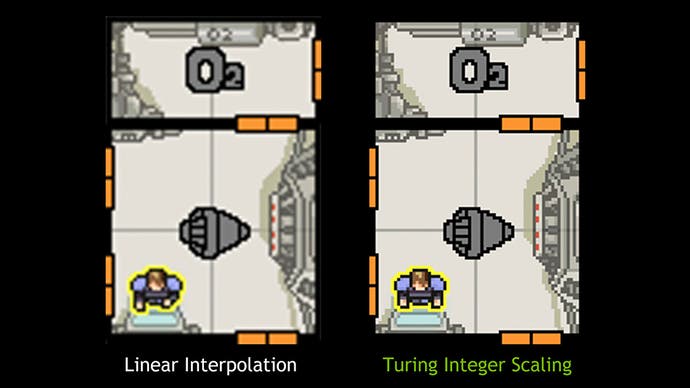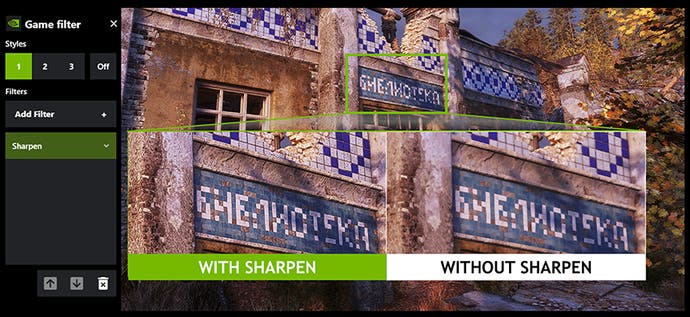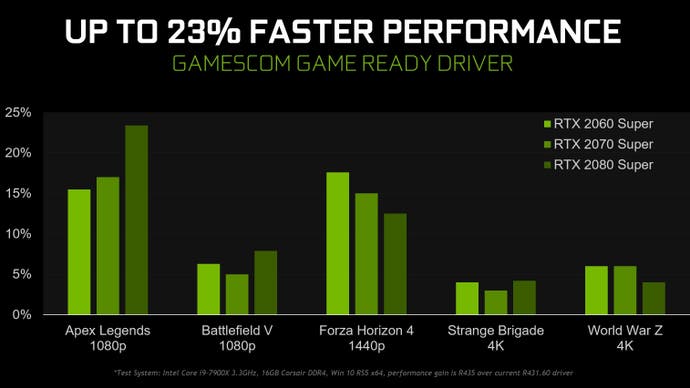Nvidia Gamescom driver adds ultra-low latency mode, integer scaling and more
Plus up to 23 per cent higher frame-rates in Apex, Forza and more.
Today marks the release of one of the biggest GeForce driver updates in months, as Nvidia unveiled their 'Gamescom Game Ready Driver' with big performance improvements and long-requested features like GPU integer scaling, an ultra-low latency mode and a new Freestyle sharpening filter. The new driver is out today at 6AM Pacific Time (2PM BST/3PM CEST).
Edit: The driver is now available for download and should appear on GeForce Experience soon.
The most exciting addition for competitive gamers is the ultra-low latency mode, a setting accessible in Nvidia Control Panel that reduces latency by up to 33 per cent by "submitting frames to be rendered just before the GPU needs them." The new mode seems to be a direct response to AMD's recent inclusion of the Radeon Anti-Lag feature on its RX 5700 series graphics cards, which works in a similar fashion.
This kind of just-in-time scheduling is more complex than the previous "maximum pre-rendered frames" setting in the Nvidia Control Panel, despite having the same goal of reducing latency. Instead of reducing the number of frames in the queue to ensure that the frame being drawn contains the most up-to-date information, the ultra-low latency mode controls the pacing of these frames so they're generated at the last possible (micro)second before they're needed.

Nvidia suggest that the feature is most effective in GPU-bound scenarios between 60 and 100fps; CPU-heavy titles like CS:GO that run at extremely high frame-rates see more subdued improvements. Ultra-low latency mode is being released in beta for now, and works on DirectX 9 and DirectX 11 titles - in more modern APIs like DirectX 12 and Vulkan, the game itself is in charge of queuing frames rather than the graphics driver so this setting doesn't have an effect.
Next up is GPU integer scaling, a way of scaling up retro and pixel art games like FTL, Terraria and Hotline Miami to fill high-resolution displays. The idea here is to avoid the blurriness introduced by typical scaling algorithms like linear interpolation found on monitors and GPUs, instead opting for perfectly scaled images that retain the sharp look of the original art. The new feature lurks in the desktop size and position screen in the Nvidia Control Panel on Turing (RTX and GTX 16-series) GPUs.

This feature has been requested by retro, emulation and pixel art fans for years, so it's great to see that it has finally been included. However, software solutions like Lossless Scaling that work on a wider range of hardware (and seemingly offer more fine-grained control) may still be a better bet for some users.
The third feature addition seems to be another response to AMD, this time for the company's Radeon Image Sharpening (RIS) tech. RIS is designed to resharpen images that have been blurred through upscaling or temporal anti-aliasing without a significant performance penalty. Nvidia boasted at the announcement of RIS that it had offered a similar option for years through the GeForce Freestyle filters system, but clearly Team Green found that its options there were lacking as it has introduced a new filter to do the job called "sharpen".

Nvidia claims that the new Freestyle filter has looks better while offering half of the performance impact of its previous "detail" filter. They also point out that the amount of sharpening can be adjusted from 0 to 100 per cent, applied on a per-game basis and works with games across all major graphics APIs: DX9, DX11, DX12 and Vulkan. Meanwhile, RIS works only on RX 5700 series graphics cards and doesn't support DirectX 11 - although a port is available for Reshade.
The final piece of the driver are performance improvements for several big titles. Nvidia quote improvements in Apex Legends (up to 23 per cent at 1080p), Battlefield 5 (up to 7 per cent at 1080p), Forza Horizon 4 (up to 17 per cent at 1440p), Strange Brigade (up to 4 per cent at 4K) and World War Z (up to 6 per cent at 4K). The Nvidia Gamescom driver blog post has the full breakdown for expected performance across multiple GPUs and resolutions.

We'll continue to bring you the latest Gamescom stories as we find them. Check out the biggest news from yesterday, including our hands-on with the Witcher 3 on Switch, our interview on the same topic and our round-up of 10 gorgeous RTX upgrades for new and upcoming PC games.

